View From the Couch: Deathdream, One From the Heart, The Powerpuff Girls, etc.
View From The Couch is a weekly column that reviews what’s new on Blu-ray, 4K and DVD.
 FILM FRENZY
FILM FRENZY
Your source for movie reviews on the theatrical and home fronts
View From The Couch is a weekly column that reviews what’s new on Blu-ray, 4K and DVD.
The Powerpuff Girls (Photo: Warner & Cartoon Network)
By Matt Brunson
(View From The Couch is a weekly column that reviews what’s new on Blu-ray, 4K and DVD. Ratings are on a four-star scale.)

BACK FROM THE DEAD (1957). If the Noël Coward comedy Blithe Spirit finds a man perturbed by the fact that the ghost of his first wife has returned and is placing a strain on his marriage to his second wife, then Back From the Dead takes a dramatic approach to the material by having the man perturbed by the fact that the spirit of his first wife has inhabited the body of his second wife. It’s based on Catherine Turney’s novel The Other One (with the author tackling screenplay duties), although certain plot elements bring to mind Hitchcock’s Rebecca and the Val Lewton production The Seventh Victim and also anticipate the 1960 shocker Tormented (recently reviewed here). Peggie Castle plays Mandy, who finds herself possessed by the spirit of her husband Dick’s (Arthur Franz) first wife, Felicia. Felicia is hardly a benevolent presence, however, as she not only causes Mandy to suffer a miscarriage (strong stuff for 1957) but also murders the family pooch (ditto). Since Dick is something of a clod, it’s up to Mandy’s sister Kate (Marsha Hunt) to ascertain exactly what’s happening, a sleuthing expedition that leads her to a devil cult fronted by Maître Renault (Otto Reichlow). Back From the Dead may look and feel like it hailed from a Poverty Row studio like Monogram, but it was actually a low-rent offering from 20th Century Fox, who even assigned Oscar-winning cinematographer Ernest Haller (Gone With the Wind) to shoot it. But the promising premise never really comes to life due to Charles Marquis Warren’s indifferent direction, which flatlines nearly every scene.
Blu-ray extras consist of a pair of film historian audio commentaries and three trailers for other Kino titles: It! The Terror From Beyond Space (reviewed here), the nifty noir 99 River Street (reviewed in From Screen To Stream below), and The Colossus of New York (included in Kino’s Sci-Fi Chillers Collection, debuting next week).
Movie: ★★
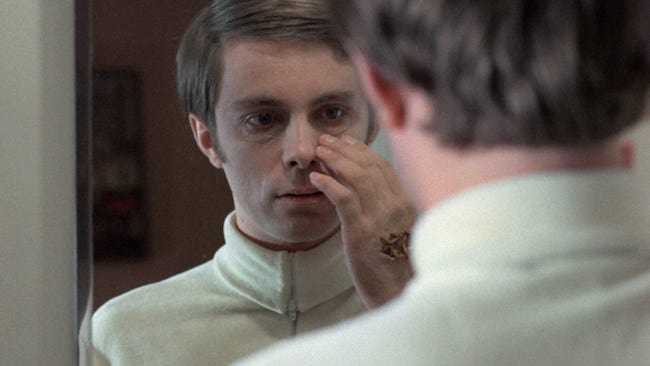
DEATHDREAM (1974). Originally called Dead of Night upon its original stateside release but also making the rounds under the various titles of (take a deep breath) Deathdream, The Night Andy Came Home, It Came From the Grave, King From the Grave, King of the Grave, The Night Walk, The Veteran, Whispers, and A Partridge in a Pear Tree (OK, JK on that last one), this Canadian effort from the team of director Bob Clark and writer Alan Ormsby (whose previous collaboration was 1972’s Children Shouldn’t Play With Dead Things, reviewed here) is more interesting in theory than in practice, as it applies the PTSD horrors of Vietnam to the zombie flick. John Marley and Lynn Carlin, who had co-starred as an unhappily married couple in John Cassavetes’ 1968 indie hit Faces, are reunited for Deathdream, this time playing an unhappily married couple whose problems run deeper than possible infidelity. Along with their daughter Cathy (Anya Ormsby), Charles and Christine Brooks are devastated by the news that their son Andy (Richard Backus) has been killed in Vietnam. Christine refuses to accept the truth and basically wills him to return home — that he does, but he’s much more moody, violent, and bloodthirsty than before he left. Pacing issues plague the film and the denouement is especially weak, but the movie tackles the subject of scarred young men returning home from the war almost as ably as later, more acclaimed films on the same subject. The complexities afforded the members of this dysfunctional family also provide it with some additional heft.
Extras in the 4K + Blu-ray edition include archival audio commentary by Clark; archival audio commentary by Ormsby; new film historian audio commentary; an interview with Backus; an interview with makeup artist Tom Savini; and a student film made by Ormsby.
Movie: ★★½
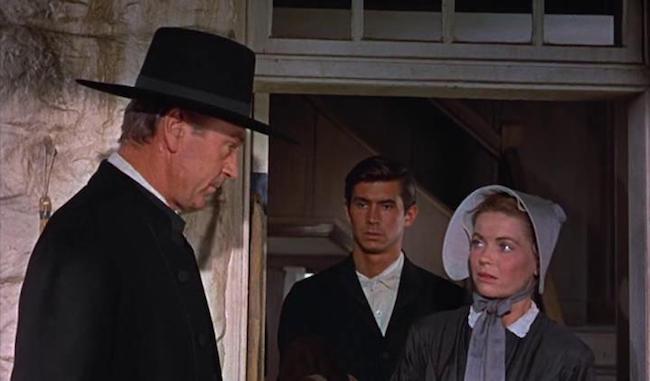
FRIENDLY PERSUASION (1956). The Quaker lifestyle is examined in this sincere but broad film set during the Civil War. Gary Cooper stars as Jess Birdwell, a Quaker living in Indiana with his strong-willed wife Eliza (Dorothy McGuire) and their three children. Despite the war that’s bumping up against their doorstep, this Quaker community doesn’t believe in violence and refuses to get involved — an exception is the Birdwells’ oldest son Josh (Anthony Perkins), who’s having trouble sorting out his own feelings regarding the taking up of arms. With the film being pulled in different directions by the source novel by Jessamyn West (a second cousin to Richard Nixon, I learned), scripter Michael Wilson’s leftist leanings (he was blacklisted by HUAC), and the conservative Hays Code, it often seems fuzzy in intent and execution, with too much broad comedy swamping the more dramatic interludes and a stance that vacillates between pro-war and anti-war. And while the theme of conquest through kindness is central to its success, those rebel raiders tamed by Eliza seem awfully nice on balance (compare them to the rebs in 1965’s Shenandoah, who more believably spend their time raping and murdering). The performances cannot be faulted, though, with Robert Middleton memorable as the Birdwells’ boisterous, non-Quaker neighbor Sam Jordan and Perkins excelling as the conflicted Josh. This earned six Academy Award nominations, including Best Picture, Supporting Actor (Perkins), Director (William Wyler), and Adapted Screenplay (the last-named nomination ultimately not appearing on the final ballot due to Wilson’s persona non grata status).
Blu-ray extras consist of a behind-the-scenes documentary segment from a 1955 episode of the Dave Garroway-hosted TV series Wide Wide World and the theatrical trailer.
Movie: ★★½
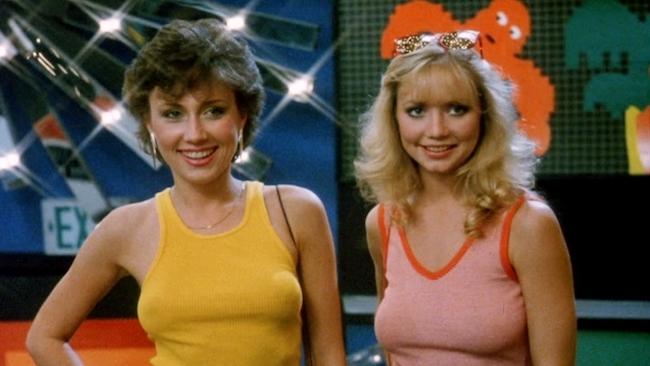
JOYSTICKS (1983). Yowza, this movie is glorious. And by glorious, I mean gloriously bad, the sort that does the motion picture industry no favors but does provide no small measure of entertainment via its awfulness. I’m adding a half-star to the rating because it does a good job of capturing what’s tied with the slasher flick as the most disreputable of eighties genres (or should that be the most eighties of disreputable genres?): the teen sex comedy. The story goes that director Greydon Clark (whose daft 1980 horror film Without Warning is reviewed here) spotted a crowd at a video arcade and thought, “Hey, I should make a movie about video arcades!” And so he did, and he took care to pack it with just about everything one would expect from this sort of undertaking. There’s the mean, middle-aged businessman who just doesn’t want the kids to have fun — in this case, it’s Joe Don Baker, “Mitchell!” himself, who wants the local arcade closed because it’s corrupting the youth. There’s the bland hero (Scott McGinnis) who has about as much personality as a discarded tuna can. There’s the nerdy virgin (Leif Green), named Eugene of course, who wants to get laid … or at the very least see nekkid boobies. There are the hotties (Kim G. Michel and former Playboy Playmate Kim Malin) who provide said boobies. There’s the fat slob (Jim Greenleaf), named McDorfus of course, who divides his time between stuffing his face and breaking wind. There’s the ditz (Corinne Bohrer) who speaks only in Valley Girl-ese (and, uh, what a treat that is to hear!). There’s the greaser punk (Jonathan Gries), named King Vidiot, who offers the mildest of opposition to our heroes. And finally, there are the two idiotic henchmen (John Diehl and John Voldstad) who get outsmarted at every turn (wah wah wah wahhhh).
Blu-ray extras include audio commentary by Clark; an interview with Clark; and the theatrical trailer.
Movie: ★½
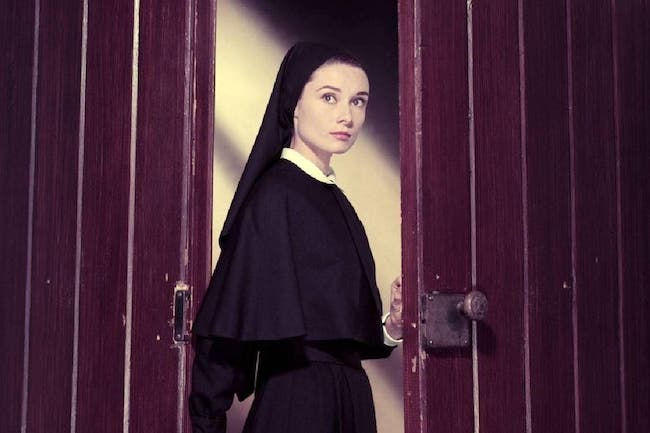
THE NUN’S STORY (1959). This excellent adaptation of Kathryn Hulme’s novel finds Audrey Hepburn delivering a superlative performance as Gabrielle Van Der Mal, a Belgian who elects to become a nun. Given the name of Sister Luke, she undergoes the rigorous training required of all novices (think of the opening act of Full Metal Jacket, but with whispery Mother Superiors instead of bellowing drill instructors) before she is allowed to take her vows. Skilled as a nurse, she hopes to be assigned to the Belgian Congo to serve the locals — instead, she’s initially sent to Antwerp to look after mental patients, and when she does make it to the Congo, she’s ordered to work not with the locals but in a hospital for Europeans, serving under the atheistic Dr. Fortunati (Peter Finch). Through the years, she struggles with her identity, wondering if she will ultimately prove too stubborn to completely give herself to God. Sister Luke’s crisis of conscience dovetails neatly with her blood-sweat-and-tears ordeals to produce a truly fascinating film, one that culminates with the character speculating if she will be able to remain passive as World War II gets rolling. Given the period, it’s amazing how uncompromising the movie feels — sentimentality is kept to a minimum, with numerous scenes providing an unexpected kick. Finch offers the proper countermeasure as the no-nonsense doctor, Dame Peggy Ashcroft and Beatrice Straight are among those excelling as nuns (interestingly, Finch and Straight would both win Oscars 17 years later for Network; Ashcroft would win hers 25 years later for A Passage to India), while Colleen Dewhurst makes a startling film debut as a violent mental patient. This nabbed a total of eight Oscar nominations, including Best Picture, Actress, Director (Fred Zinnemann), and Adapted Screenplay (Robert Anderson).
The only Blu-ray extra is the theatrical trailer.
Movie: ★★★½
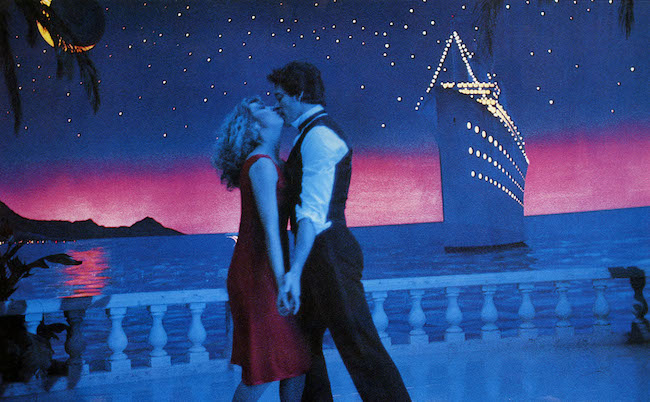
ONE FROM THE HEART: REPRISE (1982). Francis Ford Coppola is Hollywood’s resident tinkerer, never able to resist the opportunity to go back and refashion his flicks, usually to negligible returns (Apocalypse Now, The Outsiders, The Cotton Club, The Godfather Part III, Twixt, even Dementia 13!). It would take some form of alchemy to transform One From the Heart into something remotely worthwhile, and One From the Heart: Reprise doesn’t come close. One From the Heart is, of course, the notorious movie that bankrupted Coppola — meant to be a smaller, more personal project, it ended up costing $26 million and grossed only $700,000. Unfortunately, this wasn’t one of those films unfairly panned more for its budget than its actual content (see: Ishtar, Waterworld, etc.) — this one truly deserved every rotten review that came its way. Set in Las Vegas, its wafer-thin story centers on two bickering lovers (Frederic Forrest and Teri Garr) who break up and dally with other people (Nastassja Kinski and Raul Julia respectively) before questioning their mutual decision to split. It’s all set to tunes by Tom Waits — the musician earned an Oscar nomination for Best Original Song Score, but if the movie was meant to receive only one nod, it should have been for Dean Tavoularis’ astonishing sets, all built from scratch at Coppola’s Zoetrope Studios. Forrest and especially Garr are wonderful as supporting players, but they fail to carry this picture as leads — it certainly doesn’t help that their characters are unpleasant and uninteresting, and that the movie housing them is artificial and uninvolving. (For more Coppola, see You’re a Big Boy Now reviewed below.)
The 4K + Blu-ray + Digital edition contains both the 103-minute original and the 93-minute Reprise. Extras include audio commentary by Coppola; a making-of featurette; deleted scenes; and a piece on Waits.
Movie: ★½
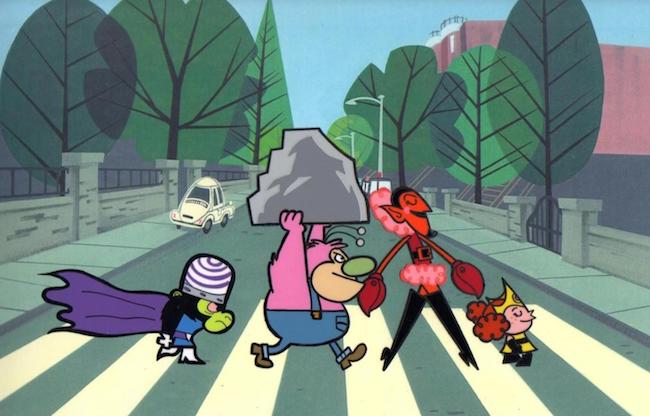
THE POWERPUFF GIRLS: THE COMPLETE SERIES (1998-2004). Having an older daughter who grew up during the 1990s and early 2000s meant becoming familiar with the era’s Cartoon Network, Disney Channel, and Nickelodeon shows, including Rugrats, The Wild Thornberrys, Lizzie McGuire, Kim Possible, and Doug. The best of the bunch? That would be The Powerpuff Girls, which ran for six seasons on Cartoon Network. A true delight, this animated series centers on Blossom, Bubbles, and Buttercup, three little girls created by kindly Professor Utonium when he accidentally spilled Chemical X into a mix of sugar and spice and everything nice. The moppets use their superpowers to protect Townsville from various villains, especially the mad monkey Mojo Jojo and the freakish demon HIM. The visual style is always eye-catching and the grade-A gags fly fast and furious. But it’s the pop-culture references that suggest the show was designed for adults as well as kids, since presumably not many tots are familiar with Dragnet and The Purple Rose of Cairo (to name but two of the countless inspirations from select episodes) — particularly brilliant is “Meet the Beat Alls,” which namedrops Fab Four tidbits left and right. The series picked up three Emmy nominations for Outstanding Animated Program (losing to The Simpsons twice and King of the Hill once) and won a pair for Outstanding Individual Achievement in Animation.
The DVD box set contains all 78 episodes of the series, including the rock opera spoof “See Me, Feel Me, Gnomey” (never aired during the show’s original run). The ample extras include in-character audio commentaries; a piece on creator Craig McCracken; the 2003 special The Powerpuff Girls: ‘Twas the Fight Before Christmas; the 2008 10th anniversary special episode “The Powerpuff Girls Rule!!!”; music videos; and promos.
Series: ★★★½
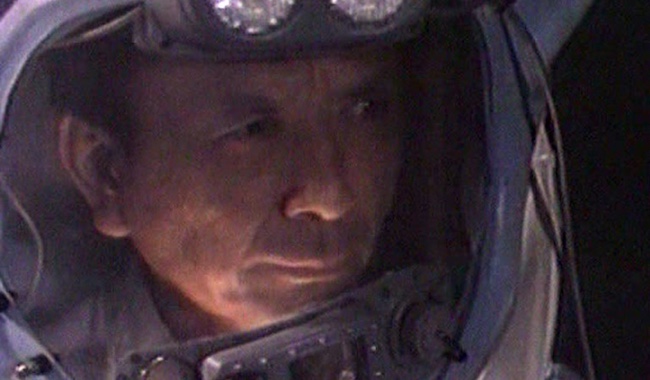
SHADOWZONE (1990). It would be easy to dismiss Shadowzone as Alien in an underground bunker, as the plot finds a terrifying entity systematically slaughtering an isolated group of scientists and working-class grunts. (It doesn’t help that one of the film’s taglines invites the comparison by stating, “Beyond Alien. Beyond The Thing…”) But this horror yarn is nothing if not ambitious in its storyline, with the monster hailing from another dimension and able to enter our world through its victims’ deep sleep. Generic hunk David Beecroft plays Hickock, a NASA officer sent to the Project Shadowzone lab to determine why a test subject has mysteriously died. It turns out that all the scientists at the facility, including lead brainiac Dr. Van Fleet (James Hong) and his assistant Dr. Erhardt (Louise Fletcher), have taken to shady means to conduct their experiments in hyper-sleep, and this naughtiness eventually leads to the debut of the otherworldly being. It’s nice to see prolific character actor Hong (Blade Runner, Everything Everywhere All at Once) in such a prominent role, and the typically awkward emoting of Fletcher (Oscar winner for One Flew Over the Cuckoo’s Nest) actually works for her cryptic character. The film also deviates from the norm in exploring the relationships between these people — I fully expected Hickock and pretty Dr. Kidwell (former Miss Universe Shawn Weatherly) to form a romantic bond, but that’s hardly what happens. It’s a shame director J.S. Cardone doesn’t muster much tension throughout the picture, and it’s equally disappointing that most of the close encounters ignore the “show, don’t tell” rule. Shadowzone is ultimately too familiar to break away from the genre pack, but it’s an acceptable option for late-night viewing.
Blu-ray extras consist of the theatrical trailer and trailers for other films offered by Full Moon Features.
Movie: ★★½
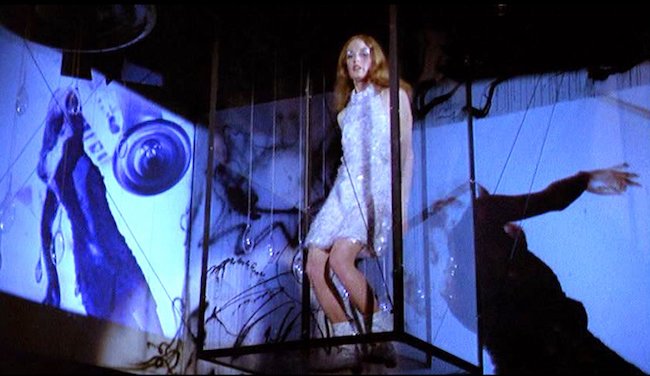
YOU’RE A BIG BOY NOW (1966). Following a pair of nudies and the Roger Corman-backed Dementia 13, Francis Ford Coppola made his major-studio debut with a time-capsule piece that could only have been made in the 1960s just as surely as Joysticks (reviewed above) could only have been made in the 1980s. Further serving as Coppola’s UCLA thesis project, this adaptation of David Benedictus’ novel is an outlandish comedy whose quirky elements include a landlady named Miss Thing, a dog named Dog, and an albino instructor with a wooden leg. Peter Kastner (merely OK) plays Bernard Chanticleer, the nerdy and virginal son of the overly protective Margery (Geraldine Page, scoring a Best Supporting Actress Oscar nomination) and the self-absorbed New York Public Library curator I.H. (Rip Torn). Bernard rents an apartment in the city, but he’s hardly free of his parents, as he works for his dad and his mother has instructed his landlady (Julie Harris) to call her if any girls ever come over. Co-worker Amy Partlett (Karen Black) has a crush on Bernard, but he’s only interested in Barbara Darling (Elizabeth Hartman), an aspiring actress, part-time dancer, and full-time manhater. Hartman, best known for portraying demure and insecure women in A Patch of Blue (go here) and The Beguiled (and here), is strong, sexy, and stylish in what proved to be a change-of-pace role (it still saddens me that she committed suicide in 1987, at the age of 43), and while the film can’t maintain its madcap momentum (the climactic chase is frantic rather than funny), it remains an interesting credit in Coppola’s filmography. The soundtrack is by The Lovin’ Spoonful; the catchy “Girl, Beautiful Girl (Barbara’s Theme)” is played repeatedly, although “Darling Be Home Soon” was the hit single (peaking at #15 on the Billboard chart).
The only Blu-ray extra is the theatrical trailer.
Movie: ★★★
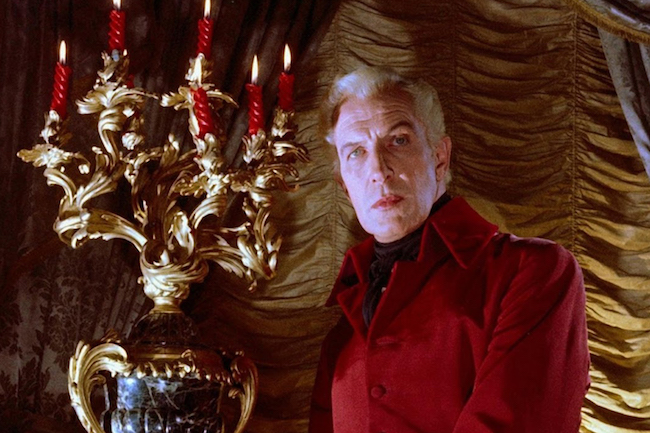
FROM SCREEN TO STREAM
CORMAN-PRICE-POE FILMS (1960-1964). Continuing the celebration of the career of the late Roger Corman (see Death Race 2000 covered last week here), how about the acclaimed series of Edgar Allan Poe adaptations directed by Corman and starring Vincent Price?
The Fall of the House of Usher (1960), aka House of Usher, begins the Poe-Corman-Price run in high style, with a white-haired Price cast as the tortured Roderick Usher. When young Philip Winthrop (Mark Damon) arrives at the estate with plans to marry Madeline Usher (Myrna Fahey), her brother Roderick insists that a family curse prevents them from ever leaving the house. This film set the template for the series with its literate script, Corman’s effective direction (he did the best work of his lengthy career on these Poe flicks), Price’s immersive emoting, and brilliant employment of light and color.
The Pit and the Pendulum (1961) is delicious, devilish fun, with Don Medina (Price) mourning over the death of his wife Elizabeth (Barbara Steele, fresh from her star-making work in Mario Bava’s Black Sunday). But her brother Francis (John Kerr) suspects something’s not quite right about her passing, so he conducts his own investigation. Kerr’s wooden performance is a handicap, but Price is in his element and that pendulum makes a great co-star.
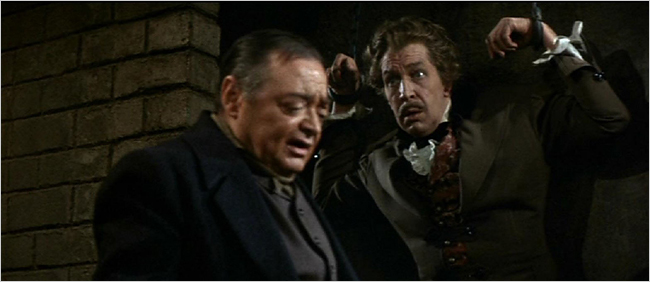
The anthology piece Tales of Terror (1962) places Price in three stories adapted by Richard Matheson. The best is “The Black Cat,” which also incorporates bits from “The Cask of Amontillado.” A drunken lout with the great name of Montresor Herringbone (Peter Lorre) befriends the famous wine taster Fortunato Luchresi (Price), only to learn that Fortunato is having an affair with his wife (Joyce Jameson). This benefits from some unique technical tricks, a nifty twist ending, and a wonderful performance by Lorre. “The Case of M. Valdemar” boasts an imaginative (if farfetched) premise and effective turns by a sympathetic Price as a dying aristocrat and an oily Basil Rathbone as an opportunistic hypnotist. The weakest segment is “Morella,” a familiar yarn about a nobleman (Price) haunted by the memory of his late wife (Leona Gage).
The Raven (1963) finds Corman and Matheson electing to expand on Poe’s poem by fleshing it out into a full-scale comedy. This is easily the campiest picture in the run, but what other movie in history allows audiences the opportunity to see a young and awkward Jack Nicholson cast as Peter Lorre’s son? In this tale of battling wizards, Price is cast as the Good, Boris Karloff plays the Bad, and Lorre is the Ugly, dishonorably switching loyalties as he sees fit and transformed into a raven whenever he misbehaves.
The Haunted Palace (1963) takes its name and a couple of lines from Poe, but it’s actually more of an adaptation of H.P. Lovecraft’s story “The Case of Charles Dexter Ward,” with Price as a warlock who’s burned at the stake and returns a century later with the intent to possess his descendant (also Price). Slack storytelling and an unsatisfying ending make this the weakest picture of the septet; the presence of a clearly unfit Lon Chaney Jr. also doesn’t help, as the horror legend was at this point deeply suffering from the alcoholism that would eventually take his life.
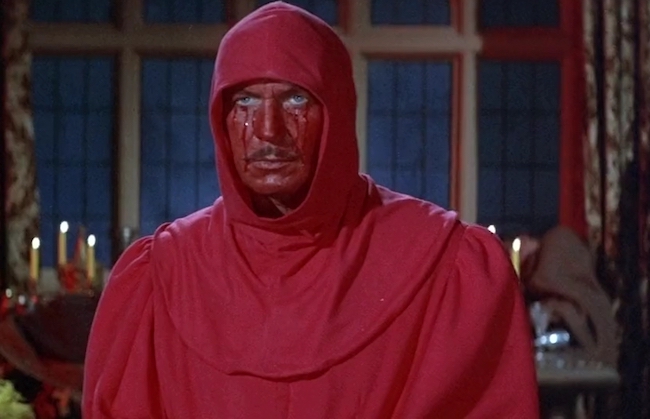
The Masque of the Red Death (1964) is my pick for the best of the series, with Price delivering a potent performance as Prince Prospero, a sadistic Satanist who leads a hedonistic lifestyle while the country is ravaged by the plague. The sharp script not only draws from the title tale but also works in Poe’s excellent short story “Hop-Frog,” while the setting and shooting style can’t help but smack of Ingmar Bergman’s The Seventh Seal (Corman always acknowledged the inspiration). The marvelous camerawork is by Nicolas Roeg, who would go on to direct such excellent features as Walkabout and Don’t Look Now.
The series wraps up with The Tomb of Ligeia (1964), a lush period tale in which widower Verden Fell (Price) marries the lovely Rowena, only to discover that his late wife Ligeia is still making her presence known around his estate. Elizabeth Shepherd is excellent (and completely different) as both Rowena and Ligeia, and the solid script was penned by no less than future Oscar winner Robert Towne (Chinatown).
The Fall of the House of Usher: ★★★½
The Pit and the Pendulum: ★★★
Tales of Terror: ★★★
The Raven: ★★★
The Haunted Palace: ★★½
The Masque of the Red Death: ★★★½
The Tomb of Ligeia: ★★★
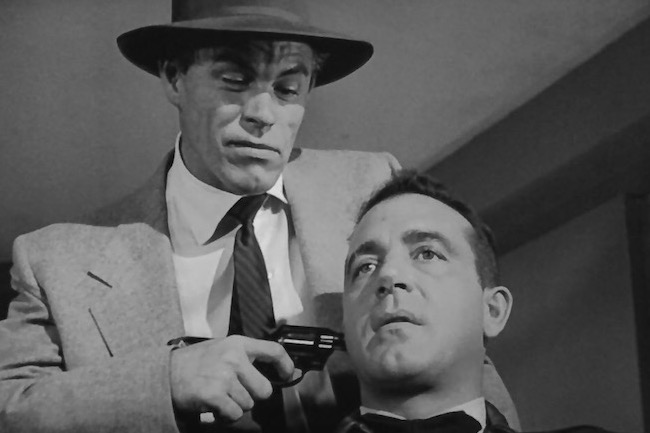
99 RIVER STREET (1953). Has any other cinematic genre offered as many buried treasures as film noir? Here’s another unpolished gem to add to the stack, a bruising beauty that makes quota in the requisite areas of femme fatales, tantalizing double-crosses, sordid murders, and existential anti-heroes. Director Phil Karlson and actor John Payne, who teamed in 1952 for the excellent noir offering Kansas City Confidential, are back together for this grim account of Ernie Driscoll (Payne), a former boxer who just missed out on a championship ring and now has to make a meager living as a cab driver. His wife Pauline (Back From the Dead’s Peggie Castle), angry at how her life has turned out, steps out behind his back with a slick character named Victor Rawlins (Brad Dexter), a hoodlum who has just pulled off a diamond heist. Ernie himself is no angel: While his relationship with aspiring actress Linda James (Evelyn Keyes) is purely platonic, he does possess a hot temper that threatens to repeatedly land him in trouble. In fact, he’s the perfect patsy for a scheme that will result in a corpse being conveniently stashed in his taxi cab. Noir vet Jack Lambert is suitably menacing as a slap-happy hood; amusingly, Frank Faylen, best known as the friendly cab driver Ernie in Frank Capra’s It’s a Wonderful Life, here plays the friendly cab company dispatcher Stan.
Movie: ★★★½
So, basically, One From the Heart is the anti-Playtime? Both films had absurdly ambitious custom-built sets and bankrupted their directors… but Tati’s film is arguably his masterpiece (I have a softer spot for Les vacances de monsieur Hulot), while Coppola’s is a dud… though Daria likes its soundtrack quite a bit.
Very astute observation! As you say, they’re similar in intent but certainly not in result. Playtime would indeed be my favorite Tati, just a hair over Mon oncle.